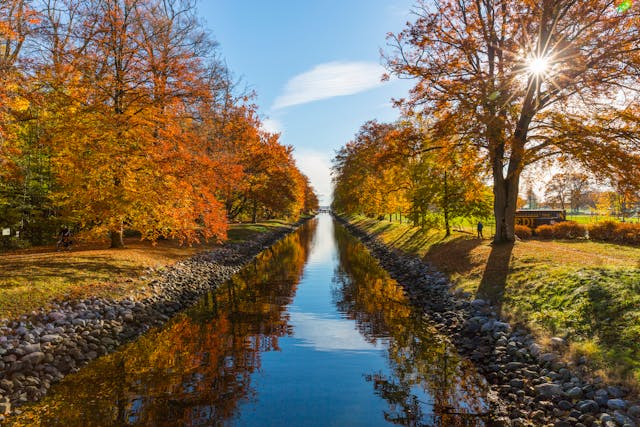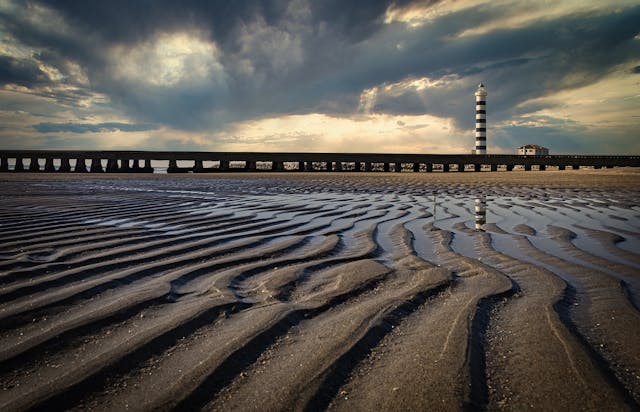Blue spaces, encompassing water bodies like seas, rivers, and lakes, play a crucial role in our overall health and well-being. Scientific research has increasingly highlighted the profound impact that these natural environments have on our physical, mental, and emotional health. The calming effect of water, both through direct interaction and sensory experiences, can significantly reduce stress, lower blood pressure, and improve mood.
Connecting with blue spaces allows us to engage with Mother Earth in a deeply fulfilling way. This connection to nature nurtures our soul and provides a sense of peace and tranquility that is often missing in our fast-paced, technology-driven lives. Whether it’s a walk along a riverbank, swimming in the ocean, or simply sitting by a lake, these experiences help us to slow down and appreciate the natural beauty around us. Such interactions foster mindfulness and can lead to a greater sense of happiness and contentment.

The benefits of blue spaces are manifold. Being near water can enhance our mental health by promoting relaxation and reducing anxiety. Physical activities such as swimming, kayaking, or even walking near water contribute to better physical health by providing exercise and fresh air. Additionally, these spaces often encourage social interactions and community activities, which can strengthen social bonds and reduce feelings of isolation.
Urban blue spaces, such as fountains, ponds, and canals within towns and cities, are also incredibly valuable. These urban oases provide residents with accessible places to relax and unwind, offering a respite from the concrete jungle. Studies have shown that even small urban blue spaces can significantly improve residents’ quality of life by providing visual and auditory relief from the city environment. They contribute to urban biodiversity, improve air quality, and can even help to mitigate urban heat island effects.

Interestingly, even videos and sounds of water can have a positive impact on us. Listening to the sound of waves crashing or a babbling brook can evoke a sense of calm and relaxation, similar to that experienced in real-life blue spaces. These sensory experiences can be particularly beneficial for those who cannot easily access natural water bodies, providing a simple way to experience the soothing effects of water from anywhere.
To connect with blue spaces, one does not need to embark on an elaborate journey. Visiting local lakes, rivers, or beaches, participating in water-based activities, or even taking short breaks by urban fountains can make a significant difference. Incorporating regular visits to these environments into your routine can enhance your well-being over time. Additionally, bringing elements of blue spaces into your home or workplace, such as aquariums or water-themed décor, can help maintain a connection to these vital natural resources.

The importance of blue spaces to our health and well-being is supported by a growing body of research. These studies underscore the necessity of preserving and integrating blue spaces into our urban and rural landscapes to promote a healthier, more balanced life. By recognizing and embracing the benefits of these natural environments, we can enhance our connection to nature and improve our overall quality of life.
In conclusion, blue spaces are integral to our health, providing numerous physical, mental, and social benefits. By integrating blue spaces into our lives, whether through direct interaction or virtual experiences, we can enhance our well-being and foster a deeper connection with nature. The scientific evidence is clear: spending time near water is not just a luxury but a necessity for a healthier, happier life.
Love Life x
References:
- Gascon, M., Zijlema, W., Vert, C., White, M. P., & Nieuwenhuijsen, M. J. (2017). Outdoor blue spaces, human health and well-being: A systematic review of quantitative studies. International Journal of Hygiene and Environmental Health, 220(8), 1207-1221.
- White, M. P., Alcock, I., Wheeler, B. W., & Depledge, M. H. (2013). Coastal proximity, health and well-being: Results from a longitudinal panel survey. Health & Place, 23, 97-103.
- Völker, S., & Kistemann, T. (2011). The impact of blue space on human health and well-being – Salutogenetic health effects of inland surface waters: A review. International Journal of Hygiene and Environmental Health, 214(6), 449-460.
- Nutsford, D., Pearson, A. L., & Kingham, S. (2016). An ecological study investigating the association between access to urban green space and mental health. Public Health, 127(12), 1005-1011.
- Cracknell, D., White, M. P., Pahl, S., Nichols, W. J., & Depledge, M. H. (2016). Marine biota and psychological well-being: A preliminary examination of dose-response effects in an aquarium setting. Environment and Behavior, 48(10), 1242-1269.
- Britton, E., Kindermann, G., Domegan, C., & Carlin, C. (2018). Blue care: A systematic review of blue space interventions for health and well-being. Health Promotion International, 33(5), 1079-1096.
- Nichols, W. J. (2014). Blue Mind: The Surprising Science That Shows How Being Near, In, On, or Under Water Can Make You Happier, Healthier, More Connected, and Better at What You Do. Little, Brown and Company.
- Finlay, J., Franke, T., McKay, H., & Sims-Gould, J. (2015). Therapeutic landscapes and wellbeing in later life: Impacts of blue and green spaces for older adults. Health & Place, 34, 97-106.
- White, M. P., Pahl, S., Wheeler, B. W., Depledge, M. H., & Fleming, L. E. (2017). Natural environments and subjective wellbeing: Different types of exposure are associated with different aspects of wellbeing. Health & Place, 45, 77-84.
- Grellier, J., White, M. P., Albin, M., Bell, S., Elliott, L. R., Gascón, M., … & Nieuwenhuijsen, M. J. (2017). BlueHealth: A study programme protocol for mapping and quantifying the potential benefits to public health and well-being from Europe’s blue spaces. BMJ Open, 7(6), e016188.

